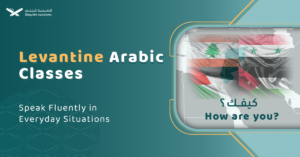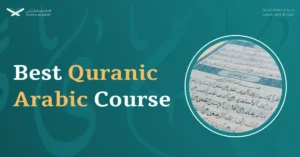Idgham Kamel is one of the several types of Idgham, it involves the complete merging of a preceding letter with sukoon into the following letter, eliminating the original letter’s characteristics and resulting in a single intensified letter, as seen with letters like noon, meem, ra, and lam in the Quran. Examples include the merging of “ت” into “ط” in “فآمنت طائفة” and “ل” into “ر” in “وقل رب.”
The three main types of Idgham Kamel are Idgham Mutajanisain (homogeneous letters), Idgham Mutmatsilain (identical letters), and Idgham Mutaqaribain (close letters), each with specific rules and Quranic examples.
Definition of Idgham Kamel
Idgham Kamel إدغام كامل or Complete Idgham involves the total merging of the preceding letter “with sokoon” by the following letter of the word, where the characteristics and pronunciation of the first letter disappear entirely, and it merges with the following letter to form one single letter with a full shadda (intensification). This occurs with the letters noon (ن), meem (م), ra (ر), and lam (ل).
Examples of Idgham Kamel in the Holy Quran
1- the verse: فآمنت طائفة ( F’amant Ta’Efa) [As-Saff: 14]
we see that the letter “ت” (taa) is replaced with “ط” (taa) and then merged into the “ط” of “طائفة” (ta’ifah), resulting in the elimination of its original form and characteristics. The pronunciation becomes an open noon followed by an intensified open taa.
2- the verse: وقل رب (wa Qol Rab) [Ta-Ha: 114]
We see that the letter “ل” (lam) is replaced with “ر” (ra) and then merged into the “ra” of “رب” (rabbi), resulting in the elimination of its original form and characteristics. The pronunciation becomes a “qaf” followed by an intensified open ra.
| Letters | Example | Explanation | Surah | Ayah |
| ت (taa), د (daal), | أُجِيبـَت دَّعْوَتُكُمَا | “ت” merges into “د” with a shaddah. | Yunus | 89 |
| ر(ra) ,ن (noon) | مِّن رَّبِّهِمْ | “ن” merges into “ر” with a shaddah. | Al-Imran | 69 |
Types of Idgham Kamel:
There are three main types of Idgham Kamel: Idgham Mutajanisain, Idgham Mutamathilain, and Idgham Mutaqaribain.
1- Idgham mutajanisain
2- Idgham mutmatsilain
3- Idgham mutaqaribain
Let’s discuss them in detail:
1. Idgham Kamel Mutajanisain:
What does ‘mutajanisain’ mean? Homogeneous letters are those that are close in articulation and similar in phonetic characteristics. These letters are divided into groups based on their articulation points in the mouth.
In the science of Tajweed (Quranic recitation), homogeneous letters are handled in specific ways to ensure correct and precise pronunciation. Examples of homogeneous letters include:
- Taa (ت), Daal (د), Taa (ط): These letters are articulated from the tip of the tongue touching the roots of the upper front teeth.
- Thaa (ث), Dhaal (ذ), Zhaa (ظ): These letters are articulated from the tip of the tongue touching the edges of the upper front teeth.
- Baa (ب), Meem (م), Waaw (و): These letters are articulated from the lips.
- Jeem (ج), Sheen (ش), Yaa (ي): These letters are articulated from the middle of the tongue.
- Kaaf (ك), Qaaf (ق): These letters are articulated from the back of the tongue.
These letters share articulation points and have similar characteristics, which classifies them as homogeneous letters.
When two homogeneous letters meet, with the first having a (sukoon) and the second having a vowel (fatha, damma, or kasra), the rule here is complete Idgham, and it is called “Idgham of homogeneous letters” (Idgham mutajanisayn).
Tables and Illustrations Idgham Kamel Mutajanisain Letters
| Letters | Example | Explanation | Surah | Ayah |
| ت (taa), ط(Taa), | وَدَّت طَّـآئِفَةٌ | “ت” merges into “ط” with shadda. | Al-Imran | 69 |
| ت,(Taa) ط (taa) | بَسَطتَ | “ط” merges into “ت” with shadda. | Al-Ma’idah | 28 |
| ت (taa) , د (dal) | أُجِيبَت دَّعْوَتُكُمَا | “ت” merges into “د” with a shadda. | Yunus | 89 |
| د (dal) , ت (taa) | قَد تَّـبَيَّنَ | “د” merges into “ت” with a shadda. | Al-Baqarah | 256 |
| ذ (Dhaal) , ظ (Zhaa) | إِذ ظَّلَمُواْ | “ذ” merges into “ظ” with a shadda. | Az-Zukhruf | 39 |
| ث (thaa) , ذ (Dhaal) | يَلْهَث ذَّلِكَ | “ث” merges into “ذ” with a shadda. | Al-A’raf | 176 |
| ب (baa) , م (meem) | ارْكَب مَّعَنَا | “ب” merges into “م” with a shadda. | Hud | 42 |
2. Idgham Kamel Mutmatsilain:
The identical letters are two letters that coincide in articulation and characteristics. If two identical letters meet, the first letter has a sukoon but is not one of the elongation letters (alif, waw, ya), and the second letter is vowelized, then the ruling is Idgham, and it is called ‘Idgham of identical letters.
Conditions of Idgham Mutmatsilain:
- The two letters must be identical in their place and manner of articulation
- The first letter must be (sākin) the next letter must be (mutaharek)
- The first (sākin) letter cannot be one of the long vowels (alif, waw, ya)
Examples of Idgham Mutmatsilain:
- (baa) ب with sokoon followed by ب (baa) with haraka (fatha,kasra,dhamma)
- (taa) ت with sokoon followed by ت (taa) with haraka (fatha,kasra,dhamma)
- (kaf) كـ with sokoon followed by كـ (kaf) with haraka (fatha,kasra,dhamma)
| Letters | Example | Explanation | Surah | Ayah |
| ب(baa)sakina, ب (baa)mutharik | اذْهَب بِّـكِتَابِي | The Two “ب” merges into one “ب” with shdda. | Al-naml | 28 |
| ت(taa) , ت (taa) | رَبِحَت تِّـجَارَتُهُمْ | The Two “ت” merges into one “ت” with shdda. | Al-Baqarah | 16 |
| ك (kaf) , ك (kaf) | يُدْرِككُّمُ | The Two “ك” merges into one “ك” with shdda. | Al-Nisa | 78 |
| ل (lam) , ل (lam) | قُـل لاَّ أَشْهَدُ | The Two “ل” merges into one “ل” with shdda. | Al-An’am | 19 |
| ن (noon) , ن (noon) | لَـن نَّـصْبِرَ | The Two “ن” merges into one “ن” with shdda. | Al-Baqarah | 61 |
3. Idgham Kamel Mutaqaribain:
What does ‘mutaqaribain’ mean? Mutaqaribain Idgham refers to the Idgham that appears when two letters that are close in articulation and in characteristics. The first letter with sokoun . The ruling in this case is the assimilation of the two letters, where the first letter disappears and the following letter is pronounced with emphasis. This is called Idgham mutaqaribain.
Cases of Idgham mutaqaribain:
The stationary “ل” with “ر”.
The stationary “ن” and “tanween” with “و”, “ي”, “ر”, “م”, and “ل.
The stationary “ق” with “ك”.
The definite article “ال”with letters: “ط”, “ث”, “ص”, “ر”, “ت”, “ض”, “ذ”, “ن”, “د”, “س”, “ظ”, “ز”, “ش”, and “ل.
An exception from the ruling of assimilation of close letters in the verse ﴿وَقِيلَ مَنْ رَاقٍ﴾ (“Wa Qeel Marraq?”) (Al-Qiyamah 27) because there is a slight pause after the stationary “ن”.
Examples of Idgham Mutaqaribain:
| Letters | Example | Explanation | Surah | Ayah |
| ل (lam), ر (ra), | وَقُـل رَّبِّ | “ل” merges into “ر” with a shadda. | Taha | 114 |
| Tanween with و (Waw) | وَلِـيّاً وَلاَ نَصِيراً | “Tanween” merges into “و” with a shadda. | Al-Nis’a | 123 |
| ن (noon) , ي (yaa) | مِـن يَـوْمِهِمُ | “ن” merges into “ي” with a shadda. | Adh-Dhariyat | 60 |
| ن (noon) , ر (raa) | مِّـن رَّبِّهِمْ | “ن” merges into “ر” with a shadda. | Al-Baqarah | 5 |
| ن (noon) , م (meem) | وَيُسْقَى مِـن مَّـاء | “ن” merges into “م” with a shadda. | Ibrahim | 16 |
| ق (qaf) , ك (kaf) | أَلَمْ نَخْـلُـقكُّـم | “ق” merges into “كـ” with a shadda. | Al-Mursalaat | 20 |
| The definite article (ال) , (sad) ص | اهدِنَــــا الصِّرَاطَ | “ال” merges into “ص” with a shadda. | Al-Fatihah | 6 |
| The definite article (ال) , (za) ز | فَالزَّاجِرَاتِ زَجْراً | “ال” merges into “ز” with a shadda. | As-Saffat | 2 |
Discover the beauty of the Holy Quran with Tajweed Courses at Sheikhy Academy:
Sheikhy Academy offers you distinctive, professional, and simplified courses to learn the rules of Tajweed, For kids, ladies, and men. so you can recite the Quran as it was revealed to our Prophet Muhammad, peace be upon him. With skilled and proficient teachers, you will learn how to recite the Quran with correct pronunciation and adorn it with proper Tajweed.
And don’t forget the saying of the Prophet, peace be upon him: “The one proficient in the Quran will be with the noble and obedient angels.” ” الماهر بالقرآن مع السفرة الكرام البررة “
At Sheikhy Academy, we take pride in offering distinctive and simplified online Tajweed lessons suitable for all age groups and stages, with professional teachers. We provide courses covering all aspects related to the Holy Quran and its sciences.
We offer Arabic language courses, memorization sessions, review sessions, mastery sessions, and creative Tajweed learning with explanations tailored to various age groups.
Why Choose Shaykhi Academy?
- Connect with highly qualified native tutors.
- Flexible scheduling to suit your busy lifestyle.
- Affordable classes tailored for all levels.
- Accessible from anywhere around the globe.
Discover Our Range of Courses:
- Arabic Noorani Qaida: Lay a solid foundation for Quranic studies.
- Online Quran Classes for Kids: Engaging lessons for lifelong learning.
- Tajweed Rules for Kids: Learn to recite with confidence.
- Quran Hifz for Kids: Step-by-step guidance to memorize the Quran.
- Quran for Adults: Introduce yourself to Quran reading and Tajweed rules.
- Online Arabic Courses: Master the language of the Quran.
- Islamic Studies: A wide range of topics related to Islam, including theology, law, Quranic studies, Hadith.
Don’t Miss Out on Your Chance to Excel!
Whether you’re a beginner or seeking advanced knowledge, Shaykhi Academy can guide you! Book your free trial now and make Ramadan 2024 your Quranic turning point!

Conclusion:
By completing this article, we hope you have learned the concept of complete assimilation and its various types (assimilation of homogeneous letters, assimilation of identical letters, assimilation of close letters), and the letters designated for each type.
You have also become familiar with examples from the Holy Quran. We now encourage you to apply what you have learned in your recitation of the Holy Quran. You can listen to the verses we presented to you as examples in this article and practice more to recite the Quran with even greater beauty and connect with its profound meanings.

















































